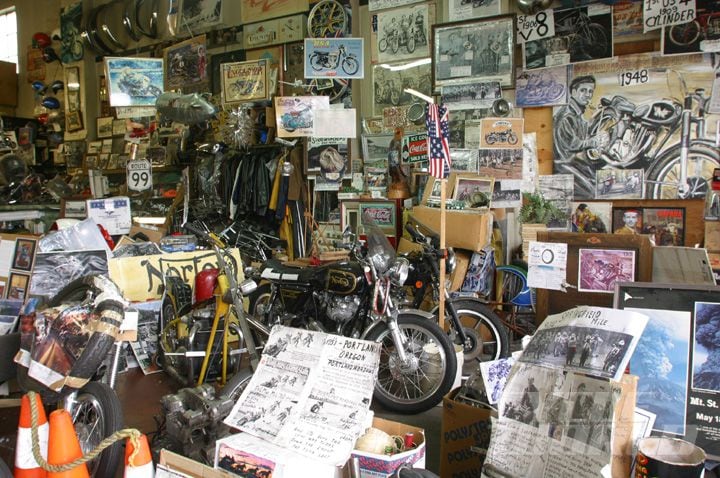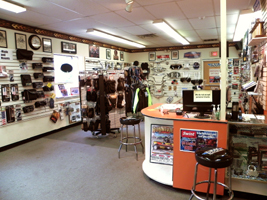Explore the current Motocross Gear NZ for every single Degree of Rider
Explore the current Motocross Gear NZ for every single Degree of Rider
Blog Article
Mastering Motorbike Gears: Just How to Enhance Your Riding Experience
In the realm of motorcycling, mastering the art of gear control is vital for improving your riding efficiency. Correctly making use of and recognizing motorbike equipments can substantially impact control, gas, and acceleration performance, changing an average trip into a seamless, exciting journey. By incorporating accurate change timing and adjusting gear option to various road problems, motorcyclists can make certain ideal engine efficiency and safety and security. The nuances of clutch control, throttle coordination, and gear auto mechanics beckon a deeper exploration, assuring to open the full possibility of your device. Exactly how can these strategies be utilized to absolutely enhance your riding experience?
Comprehending Gear Mechanics
Exactly how do the ins and outs of gear mechanics influence bike efficiency? At the core of bike dynamics, gear auto mechanics play a crucial function in transforming engine power right into motion, inevitably dictating rate and control. Gears, thoroughly crafted parts, permit riders to optimize torque and speed, ensuring a seamless transition via various surfaces and speeds. The gear proportions, thoroughly created, identify the relationship between engine changes and wheel turns, influencing velocity and gas efficiency.
Comprehending equipment mechanics begins with identifying the value of the transmission, which houses numerous equipments of differing sizes. These gears communicate via a process called meshing, where teeth of different equipments engage to send power. The precision of this communication is critical; any kind of imbalance or damages can lead to inefficient power transfer, hindering efficiency. In addition, the arrangement and size of equipments affect the motorbike's ability to handle various tons and speeds.
Additionally, the concept of gear changing is indispensable to maximizing performance. Prompt and smooth changes make sure that the engine operates within its optimal power band, avoiding unnecessary pressure and enhancing durability (moto parts nz). By understanding these mechanical details, bikers can accomplish a harmonious blend of control, power, and performance, elevating their riding experience
Timing Your Shifts
Change timing mastery is necessary for enhancing bike performance and boosting the riding experience. Correctly timed shifts ensure that the engine runs within its optimum power band, which is vital for preserving control, accomplishing smooth acceleration, and making certain the long life of the motorcycle. Cyclists should develop an intuitive sense of when to move equipments, which includes recognizing the partnership between engine changes per minute (RPM) and rate.
To understand shift timing, pay attention to the engine's audio and feel, as these give essential clues about when to change equipments. The optimal change factor commonly occurs when the engine comes close to the upper variety of its power band without reaching the redline. Shifting prematurely can bring about a lack of power, while changing far too late may trigger unneeded engine strain
Additionally, road problems and riding design influence change timing. In contrast, during highway riding, fewer changes at greater rates can be more ideal.
Enhancing Fuel Effectiveness
While understanding bike equipments is essential for efficiency, enhancing fuel effectiveness is equally important for both economic and ecological factors. Optimal fuel usage not just lowers functional costs however additionally lessens the eco-friendly footprint of riding. To achieve this, one need to comprehend the complex connection in between equipment selection and engine efficiency.
Firstly, picking the best equipment at suitable speeds can considerably affect fuel intake. Riding in a greater equipment at lower rates can result in engine carrying, which is detrimental to both fuel economic climate and engine health and wellness. Conversely, riding in lower equipments at broadband results in unnecessary fuel intake. Thus, preserving an optimum equilibrium by changing equipments in alignment with roadway problems and anticipated maneuvers is necessary.
Furthermore, routine maintenance plays a pivotal role in fuel performance. Guaranteeing that the motorcycle is well-tuned, with tidy air filters and properly inflated tires, can enhance aerodynamics and decrease fuel wastage. Taking on a riding design that accepts gradual velocity and smooth deceleration can contribute to better gas economy.

Methods for Smooth Transitions
Accomplishing smooth gear changes is essential to enhancing the riding experience and ensuring the durability of a motorcycle's transmission system. Appropriate gear moving not only contributes to a smooth experience however additionally lessens deterioration on the mechanical components. To master the art of smooth changes, cyclists must concentrate on a few vital techniques.

Secondly, clutch control plays a pivotal duty. Involving and disengaging the clutch efficiently needs technique. The clutch bar need to be launched progressively, permitting a seamless transfer of power from the engine to the wheels without creating a shock or abrupt motion.

Adjusting to Road Conditions
Browsing varied roadway conditions is a vital ability for any motorcyclist intending to maintain control and security. Whether you're riding on damp surfaces, gravel roads, or browsing sharp turns, your capability to adapt your gear use and riding technique is my blog paramount. Recognizing how to adjust your equipments properly can considerably influence traction and security, guaranteeing a much safer journey.
On wet roads, it is recommended to maintain higher gears to lower torque and reduce wheel spin. This technique aids maintain grasp on slippery surface areas, enabling smoother acceleration and slowdown. On the other hand, when riding on crushed rock or uneven surface, lower equipments are preferable. Lower equipments offer far better control and enable you to react more swiftly to unexpected modifications in the roadway surface.
Sharp curves demand precise gear monitoring to stabilize speed and control. Downshifting prior to entering a contour can aid maintain energy while making certain the motorbike continues to be steady throughout the turn. Constant method in different conditions improves your capacity to forecast and react to changes in roadway appearance and incline.
Verdict
Grasping motorbike gears substantially enhances the riding experience by boosting acceleration, gas, and control effectiveness. A thorough understanding of gear mechanics and exact change timing makes certain the engine runs within its ideal power band, while smooth changes through reliable clutch and throttle control rise comfort and efficiency. Adapting equipment choice to different road problems, such as using higher gears on wet surface areas and lower gears on gravel, more enhances handling and safety. Ultimately, these skills raise the general trip.
Recognizing equipment technicians starts with acknowledging the significance of the gearbox, which houses numerous gears of differing sizes. These gears engage through a process recognized as meshing, where teeth of different gears engage to transfer power (moto parts nz). Gentle adjustments to the throttle throughout gear shifts can protect against jerky movements and maintain a consistent riding speed
Whether you're riding on wet surfaces, crushed rock roadways, or navigating sharp turns, your capability to adapt your gear use and riding technique is critical. Adapting gear choice to various roadway problems, such as utilizing higher gears quietest helmets on damp surface areas and lower gears on gravel, additional boosts handling and security.
Report this page